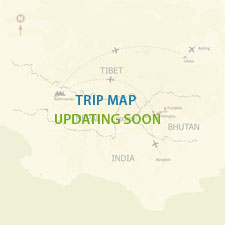
Bhutan Culture Tour |
Make Inquiry |
Bhutan culture tour is the paradise tour to explore the Buddhist religion, culture, tradition, Monastries with spectacular views of the mountains. Only limited tourist could visit this beautiful country. Bhutan is very rich in culture.
Main touristic sites in Thimphu
Memorial Chorten was built in 1974 by his late majesty, King Jigme Dorge Wangchuk. This stupa provides a deep insight into Buddhist philosophy.
Simtokha Dzong was built in 1627 by Shabdrung Ngawang Namgyal, is situated on a low valley, 8 km down from Thimphu. The series of over 300 finely worked slate carvings behind the prayer wheels in the courtyard is the most noteworthy artistic features of this Dzong.
National Library: Bhutan’s histories imprinted in a number of archaic texts are preserved at the national library that also has modern academic books and printed blocks for prayer flags.
Institute for Zoring Chusum is commonly known as arts and Crafts School or Painting School that officers a six-year course on the 13 traditional arts and crafts of Bhutan.
Traditional Medicine Institute is also a training centre for traditional medicine practitioners. The rich herbal medicine produced from medical plants abundant in the kingdom are prepared in this institution. It does not allow the entrance for visitors due to hygiene concern but one can view it from outside.
The Folk Heritage Museum (Phelchey Toenkhyim) exhibits the rural past of Bhutan. The main display in the museum is a restored three storey traditional rammed mud and timber house that dates back to the mid 19th century. Some of the native trees and plants that were used in the rural households for various domestic purposes have been planted in this museum.
National Textile Museum opens its exhibition on sis major themes, wrap pattern weaves, weft pattern weaves, role of textiles in religion, achievements in textile arts, textiles from indigenous fibers and the royal collection. The accessories used by the members of Royal family can be found in this museum.
The Folk Heritage Museum (Phelchey Toenkhyim) exhibits the rural past of Bhutan. The main display in the museum is a restored three storey traditional rammed mud and timber house that dates back to the mid 19th century. Some of the native trees and plants that were used in the rural households for various domestic purposes have been planted in this museum.
Trashichhoedzong was built in 164. Its present form was rebuilt by King Jigme Dorji Wangchuk in 1965. His Holiness, the Je Khenpo, makes its home in the Dzong in the warmer summer months.
Changangkha is a fortress like temple and monastic school, established in 12th century on a site chosen by Lama Phajo Drugom Shigpo who came from Tibet. Thimphu valley looks fantastic from the courtyard of temple.
Craft Bazar gets organized on Tuesday and Wednesday that offers genuine Bhutanese arts and craft.
Zangthopelri Lhakhang was built, the present structure, in 1960 possesses some impressive murals and art treasures. The site of the temple was a former battle ground. The construction of the temple was meant to pacify energies.
Buddha Point (Kuensel Phodrang) offers a fantastic view of Thimphu valley. The country’s largest Buddha statue and great glimpse of the valley are the significant attractions of this point.
Weekend Market provides an opportunity to the visitors to join the local people and the culture. Every Saturday and Sunday the city and village dwellers assemble in this market on the bank of the river.
Junghi Handmade Paper Factory in Thimphu unit produces traditional handmade paper made of natural plant which is widely used from for religious script, packing materials, hand-carry bags etc. Another unit of this factory, 22 km from Thimphu town, recycles waster paper.
- Outline Itinerary
- Detail Itinerary
- Trip Facts & Map
- Trip Cost Details
- Useful Information
Detail Itinerary
Day 01: Arrival


